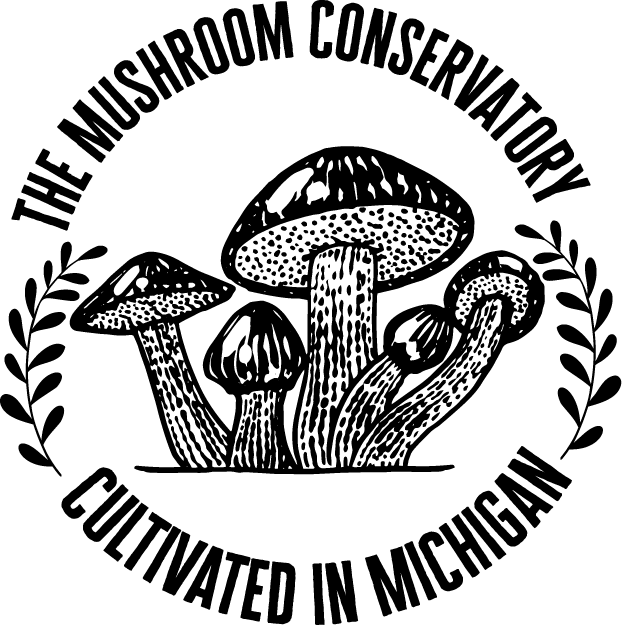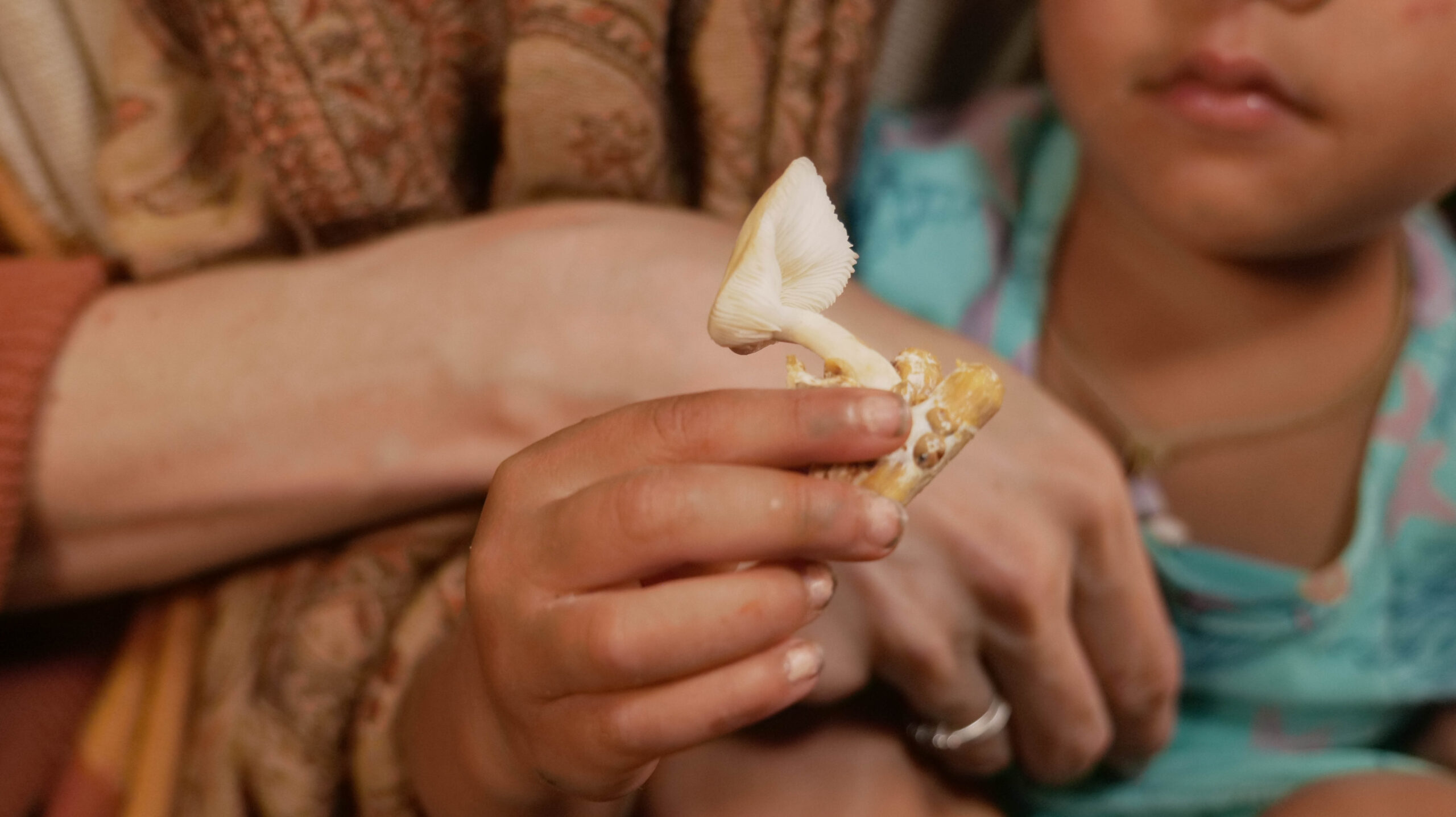Your cart is currently empty!
Curated by Erin Hamilton, Leader of The Mushroom Conservatory
Mushrooms are some of the most intriguing organisms on the planet. From their ability to communicate with trees to their potential to save the environment, mushrooms are truly nature’s wonders. Here are some mind-blowing facts about mushrooms that will deepen your appreciation for these incredible fungi.
🌍 1. Mushrooms Are Fungi, Not Plants
While mushrooms may look like plants, they actually belong to the fungi kingdom—a separate group from plants, animals, and bacteria. Unlike plants, mushrooms don’t photosynthesize. Instead, they get their nutrients by breaking down organic matter, which makes them decomposers in ecosystems.
🧬 2. They Can “Talk” to Trees
Mushrooms are part of a larger mycelium network, sometimes called “nature’s internet.” Mycelium—the network of fungal threads beneath the soil—connects trees, plants, and other fungi. Through this underground network, trees can exchange nutrients, send chemical signals, and even warn each other about pest invasions.
- In fact, some studies suggest that trees use mycelium to “talk” to one another, sending out chemical signals when they’re attacked by insects, so nearby trees can prepare their defenses.
🌡️ 3. Mushrooms Can Help Clean the Environment
Certain species of mushrooms, like oyster mushrooms, are capable of cleaning up pollutants in the environment through a process known as mycoremediation. Mycelium can break down toxic chemicals, heavy metals, and even petroleum products, transforming harmful substances into harmless compounds.
- Fun Fact: Oyster mushrooms have been used in oil spill cleanup efforts because of their ability to absorb and neutralize the oil.
🌱 4. Some Mushrooms Are Edible, Others Are Not
While many mushrooms are edible, some can be highly toxic. Death Cap mushrooms (Amanita phalloides), for example, contain toxins that are responsible for the majority of mushroom poisoning deaths worldwide. However, even edible mushrooms need to be correctly identified before consumption, as many toxic mushrooms look similar to safe varieties.
- Tip: Always consult a mushroom guide or expert before foraging wild mushrooms.
🌞 5. Mushrooms Are the Only Non-Plant Source of Vitamin D
Mushrooms are one of the few non-animal sources of vitamin D. When exposed to sunlight, mushrooms produce ergosterol, which is converted into vitamin D, just like humans produce vitamin D when exposed to the sun.
- Fun Fact: You can actually boost the vitamin D content in mushrooms by exposing them to UV light during growth or after harvest!
💧 6. Mushrooms Are 80% Water
Mushrooms are composed of about 80% water, making them a hydrating food source. This high water content contributes to their light, delicate texture and makes them an excellent addition to soups, stews, and stir-fries.
🧪 7. Some Mushrooms Have Been Used Medicinally for Centuries
For thousands of years, mushrooms have been used in traditional medicine to treat various ailments. Some mushrooms, like Reishi, Lion’s Mane, and Turkey Tail, are known for their immune-boosting, anti-inflammatory, and cognitive-enhancing properties.
- Fun Fact: Medicinal mushrooms are now a major component of health supplements, from capsules to teas and tinctures.
🌟 8. They Can Be Used to Create Sustainable Packaging
Mushrooms are now being used to create eco-friendly packaging that is biodegradable and compostable. This mushroom-based packaging is an alternative to plastic and other non-renewable materials. The material is made from mycelium, which grows into a dense, moldable structure that can replace Styrofoam and plastic foam.
🌿 9. Mushrooms Are Older Than Trees
Mushrooms are ancient organisms, predating even the first trees. They evolved long before plants, and early fungi were some of the first organisms to colonize land, playing a vital role in breaking down the minerals in rocks and enriching the soil for plants.
🐜 10. They Can Be Used in Pest Control
Some fungi have the ability to parasitize insects, helping control pest populations in crops. For example, the Entomopathogenic fungi infect and kill insect pests. This is a natural form of pest control that doesn’t involve harmful chemicals.
🔬 11. Mycelium Can Be Used to Grow Materials
Mycelium is not only useful for growing mushrooms but also for growing sustainable materials like mycelium bricks, mycelium leather, and insulation materials. These materials are biodegradable, fire-resistant, and have been touted as potential eco-friendly alternatives to traditional building materials and plastics.
🧑🔬 12. Kingdom Fungi is a Major Source of Antibiotics
Fungi are an important source of antibiotics. The famous Penicillin antibiotic, for example, was derived from a type of Penicillium mold. Other fungi are used in medicine to fight infections and combat a variety of health conditions.
🐍 13. Some Mushrooms Are Bioluminescent
A handful of mushroom species, like the “foxfire” mushrooms, produce bioluminescence, which means they glow in the dark. This eerie glow is due to a chemical reaction that allows the fungi to attract insects that spread their spores, helping the mushrooms reproduce.
🍽️ 14. Mushrooms Are Highly Versatile in the Kitchen
Mushrooms are incredibly versatile and can be used in a wide variety of dishes, from soups and salads to stir-fries, pizzas, and even mushroom-based “steaks”. Oyster mushrooms, in particular, have a meaty texture, making them a popular choice for vegetarian and vegan recipes.
🌾 15. Mushrooms Can Grow on Almost Anything
One of the most remarkable things about mushrooms is their ability to grow on a wide variety of materials. While mushrooms typically grow on organic matter like wood and straw, some species can even grow on coffee grounds, cardboard, and spent grain from breweries.
🌟 16. There Are Over 10,000 Known Mushroom Species
There are over 10,000 species of mushrooms worldwide, with an estimated 3-4 MILLION more that haven’t been discovered yet. While only a small fraction of these species are edible, the diversity of mushrooms in terms of shape, size, color, and flavor is staggering.
🌱 17. Mushrooms Can Help Fight Climate Change
Mushrooms play an essential role in carbon sequestration—the process of capturing and storing carbon dioxide from the atmosphere. Mycelium helps store carbon in the soil, which can help mitigate the effects of climate change by reducing the amount of CO2 in the atmosphere.
🌟 18. Fungi Are a Huge Part of the Food Chain
Mushrooms and fungi are essential to many ecosystems, especially forests. As decomposers, they help break down dead plant and animal matter, returning essential nutrients to the soil. Without fungi, the world would be buried under organic waste, and nutrient cycles would be disrupted.
🌿 19. Mushrooms Can Be Used to Create Energy
Some researchers are exploring the potential of mushrooms to create biofuels and other forms of renewable energy. Mycelium-based materials have shown promise in energy storage and battery technologies as well.
🍄 20. Mushrooms Are Still Mysterious
Despite all we know about mushrooms, scientists are still uncovering new discoveries. The world of fungi is incredibly diverse and often full of surprises, from new medicinal properties to new species and novel applications. The study of mushrooms—mycology—is a field that’s constantly evolving, with exciting new breakthroughs every year.
The Mushroom Conservatory
Learn. Grow. Sustain.


Leave a Reply